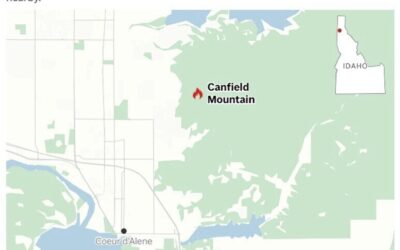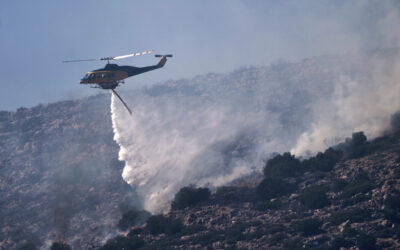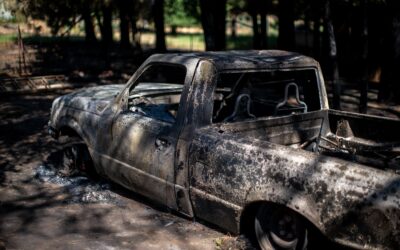LOS ANGELES (AP) — A turn to wet weather has blunted an already moderate wildfire season in California but some risk remains as changing climate has made a rainy fall no guarantee of a stormy winter.
The latest Pacific storm brought bands of rain and snow to parts of the state on Monday and was predicted to last into midweek. It’s the second significant storm this month in drought-stricken California and follows earlier smaller weather systems.
“My sense is it’s certainly going to help,” said Assistant Chief Tim Chavez, who works in wildfire forecasting and threat intelligence for the California Department of Forestry and Fire Protection.
In Northern California, snow in the high country will put an end to the fire threat “for quite some time” while in lowlands where rain has been scant it might just “slow things down,” he said.
Southern California, meanwhile, is entering the time of year when the notorious Santa Ana winds can form, whipping sparks into firestorms as they roar out of the interior toward the ocean.

Snow Covers Trail Ridge Fire, Dillon, MT (Inciweb)
Chavez said the greenery sprouting on the landscape from the rains should take the bite out of any fires that start in the south.
“It’s going to reduce the chances of having a big fire siege even if we do get a big wind event in the next 30 to 45 days especially in the south,” Chavez said.
“We’re so far behind in our rainfall amounts that it’s going to take us either a super wet year or multiple super wet years for the entire state to really recover, but it will definitely slow things down for the next month-and-a-half, two months,” he said.
Last year, some 3,900 square miles (10,117 square kilometers) burned in California and more than 3,800 structures were lost or damaged. In 2020, more than 6,700 square miles (17,353 square kilometers) burned and more than 11,000 structures were destroyed.
So far this year, with just over 565 square miles (1,465 square kilometers) burned and 876 buildings destroyed or damaged, California has avoided a repeat of the massive scale of conflagrations seen in recent years.
Whether or not beneficial storms will help keep that trend going remains to be seen, but climate variations are worrisome.
Last year, a powerful atmospheric river dumped huge amounts of rain on California in October and a wet stretch in December left parts of the Sierra Nevada buried in snow. Then, the state experienced its driest January through April on record.
In addition to that dramatic variability, forecasts point to the persistence of the La Nina ocean cooling phenomenon in the Pacific that tends to indicate a dry winter in California.
Chavez said that situation means it’s too early to say fire season is over.
“Twenty years ago I would have said this was a season-ending event — that’s kind of the terminology we use when you get your first storm and you’re counting on getting more successive storms every other week or so after that — but in today’s climate I really can’t say that anymore,” he said.




